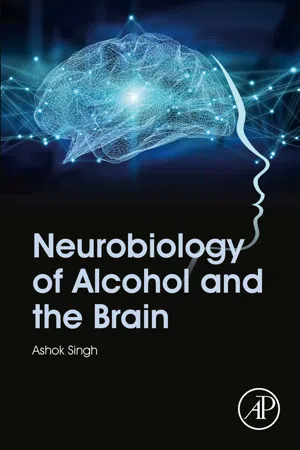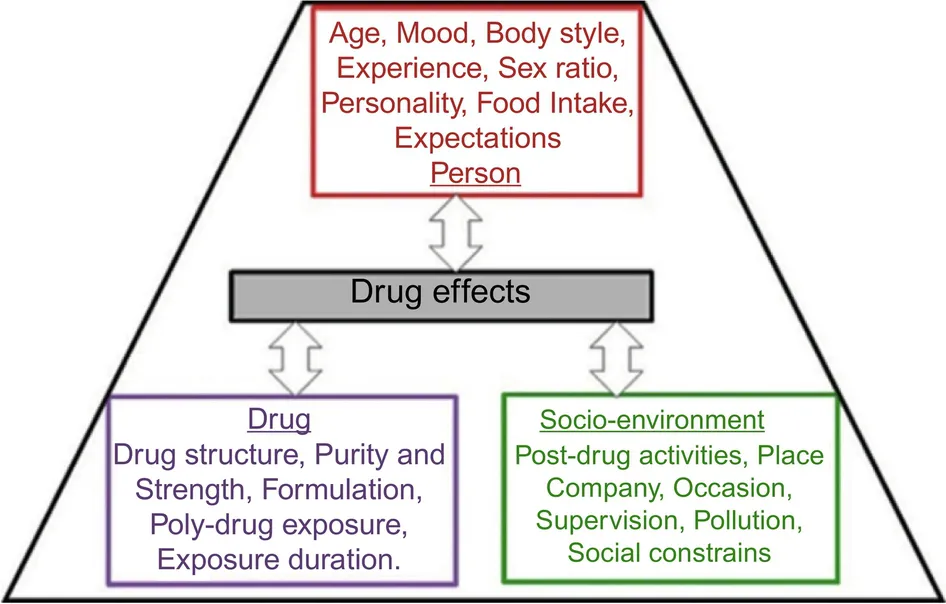
Neurobiology of Alcohol and the Brain
Ashok K. Singh
- 364 pages
- English
- ePUB (adapté aux mobiles)
- Disponible sur iOS et Android
Neurobiology of Alcohol and the Brain
Ashok K. Singh
À propos de ce livre
According to the 2018 National Survey on Drug Use and Health, 14.4 million adults aged 18 and older had alcohol use disorder (AUD). Mixing alcohol with other drugs such as opioids or cocaine has become an emerging trend, exacerbating public health concerns and may synergistically augment the seriousness of the adverse effects such as withdrawal symptoms, cardiovascular disorders, liver damage, reproductive abnormalities, and behavioral abnormalities.
Despite the seriousness of the situation, possible mechanisms underlying the addiction and the withdrawal symptoms is not yet understood. This has been one of the key hindrances in developing effective treatment. Neurobiology of Alcohol and the Brain addresses the addiction-related problems reviewing both the mechanisms and withdrawal system with alcohol addiction. First, the book discusses the mechanisms of the rewarding and aversive effects, including addiction and the withdrawal symptoms of alcohol drinking. Next, alcohol's interaction with other drugs and ensuing adverse consequences is discussed including current and novel treatments against alcoholism. This is followed by a closer look at mental health and alcohol use disorder comorbidity. Lastly, the reader is provided with examples of an experimental study that describes possible protective effects of gold nanoparticles against alcohol addiction in rats subjected to alcohol self-administration. Neurobiology of Alcohol and the Brain will unlock the mechanistic diversities of alcoholism helping to facilitate future developments of new, personalized treatment options for patients suffering from alcohol addiction.
- Provides an exhaustive overview of neurobiology of alcohol addiction, including significant recent advances
- Discusses the mechanisms underlying the adverse effects of alcohol-drug mixtures
- Includes recent experimental studies on gold nanoparticles
Foire aux questions
Informations
1: Journey from responsible alcohol drinking to alcoholism
Abstract
Keywords
1: Scope of alcohol abuse



Table des matières
- Cover image
- Title page
- Table of Contents
- Copyright
- Preface
- 1: Journey from responsible alcohol drinking to alcoholism
- 2: Interaction of alcohol with drugs of abuse and medicines
- 3: Mental health and alcohol use disorder (AUD) comorbidity
- 4: Traditional treatment strategies for alcoholism and the withdrawal symptoms
- 5: Novel nanoparticle-based treatment approaches
- 6: Conclusions
- Index